
Inside IKEA’s Laboratory of Futuristic Foods
Assemble and enjoy bug burgers, mealworm meatballs, and algae hot dogs.
In a blue-and-white building in the trendy Meatpacking District of Copenhagen, next to Neo-Nordic seafood bars, fika-forward cafés, and a former Noma chef’s taqueria, lies Space10, a research and innovation laboratory. Inside, scientists, architects, designers, and culinary professionals collaborate on vertical farming domes, open-sourced designs for sustainable micro-homes, and burgers made with worms and beetroot. Housed in a former fish market, this is IKEA’s laboratory of futuristic invention.
Space10 was co-founded in 2015 by Carla Cammilla Hjort, a former professional dancer, DJ, and designer, and Simon Caspersen, a former documentary filmmaker. In 2014, IKEA invited Hjort to do a presentation attended by Inter IKEA’s CEO, Torbjörn Lööf. Hjort’s talk led to a successful collaboration between her design studio, ArtRebels, and IKEA. Together they launched Bråkig (Swedish for brat), a limited-release furniture collection for young urbanites. According to Hjort, in an interview with Startup Guide, Lööf was so impressed that he asked her to start a project to “create a better IKEA for the future.”

“The fact that the CEO of one of the biggest retailers asked me if I wanted to make the world a better place … I was so happy,” she said. She got Caspersen on board, and the duo brainstormed what they now call a “future-living lab.” After a six-hour pitch to Lööf, Space10 was born. Hjort and Caspersen asked for (and received) three years of initial funding to conduct market research and trend analysis before having to come up with a deliverable.
IKEA’s stated mission is to improve people’s everyday lives. If affordable furniture is a small step in that direction, Space10 aims for the giant leap. The lab’s projects include SolarVille, a working prototype of a miniature neighborhood powered entirely by solar energy, open-sourced furniture designs that would allow anyone to furnish a workplace by using reclaimed materials and local production, and surveys that explore the future of co-living. But just as IKEA is invested in expanding their food business, and known for their Swedish meatballs, Space10 has prioritized projects that explore the future of food.

If breaking down and building is at the core of IKEA, at Space10, this driving force was unleashed in a reconception of the meatball. In a 2015 project titled “Tomorrow’s Meatball,” Space10 envisioned a lab-grown artificial meatball, a 3D-printed meatball, and a crispy bug ball, among others. Key environmental statistics spurred the re-vision. A third of the food the world produces goes to waste, and the UN reports that we need to produce 70 percent more food by 2050. In 2016, Space10’s Chief Innovation Officer, Guillaume Cherny-Brunet, unveiled the meatballs at a pop-up exhibit in a fashionable, low-lit event space in New York City.
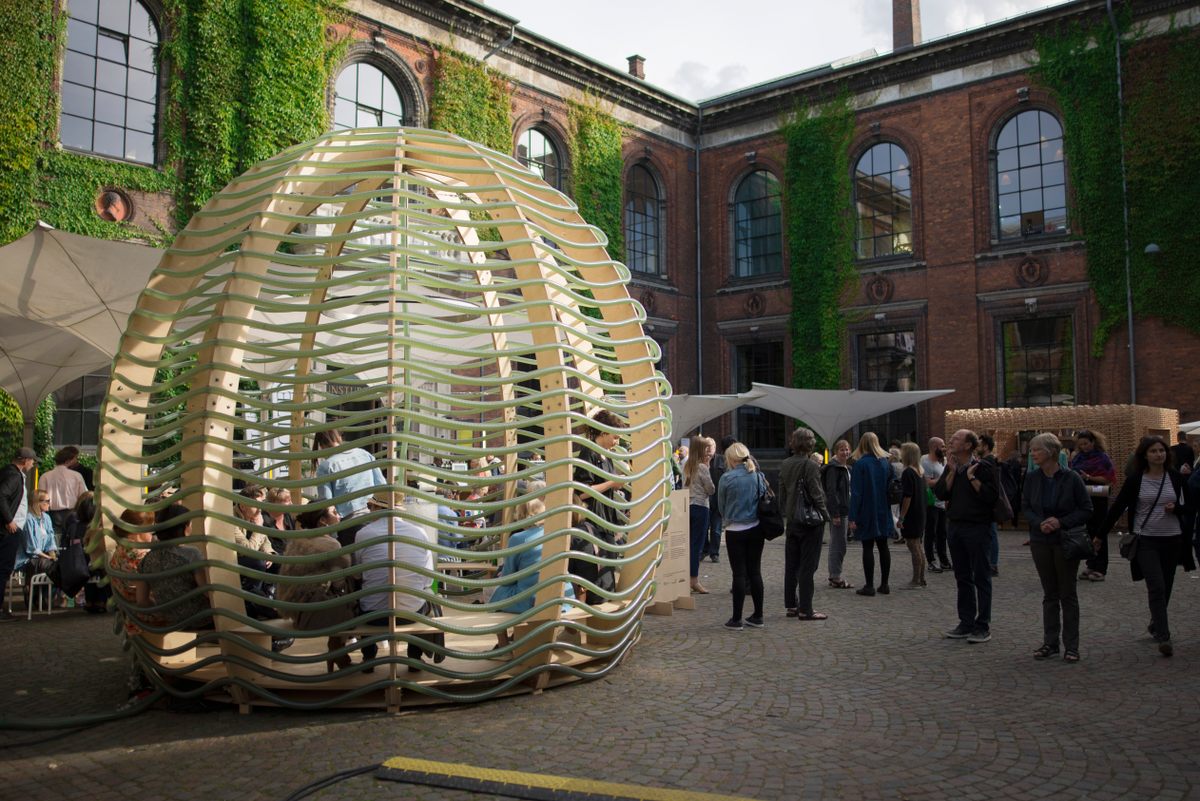
While projects such as “Tomorrow’s Meatball” remain experimental, IKEA is actively launching new food products that aim to reduce carbon footprint and recognize public health and animal welfare as interlinked concerns. The company has pushed for better animal welfare standards, introduced plant-based prepared foods (including veggie meatballs and hot dogs), and, this month, launched a line of vegan strawberry soft serve for the European market. The vegan ices, made with fruit purees, have half the carbon footprint of ice cream containing dairy, IKEA says.
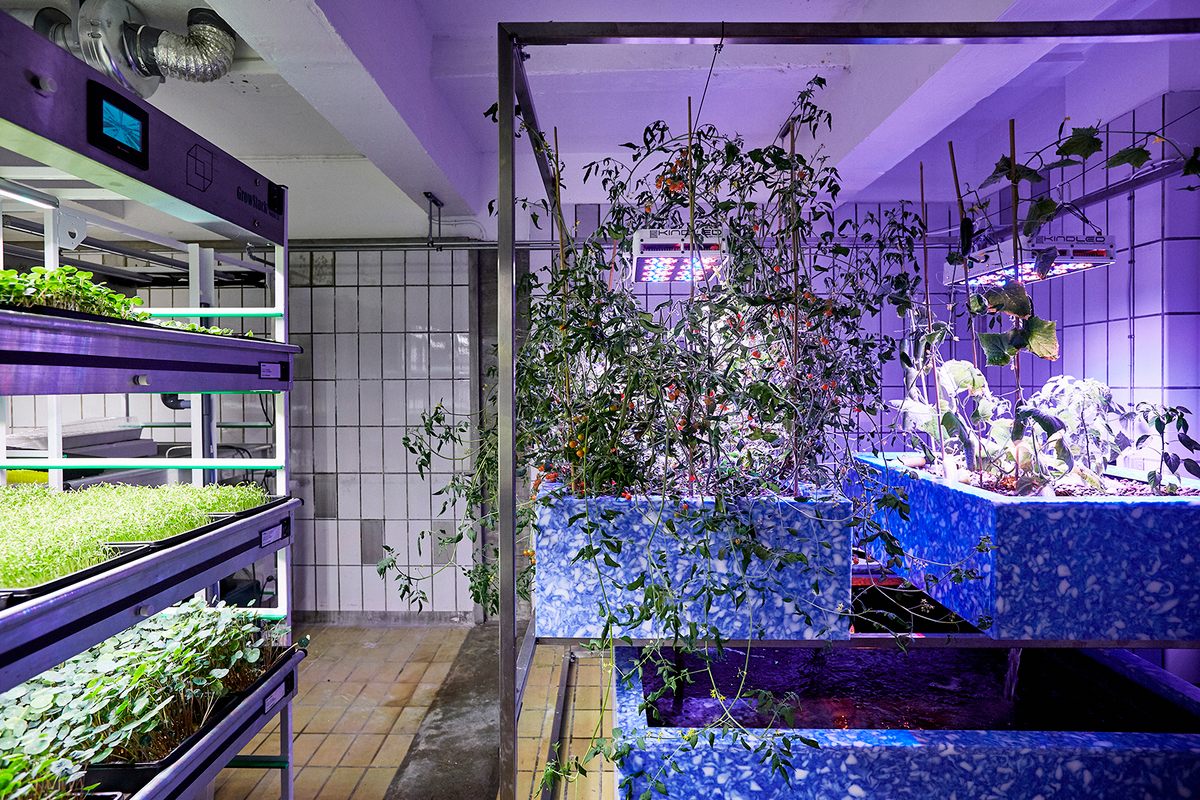
Other projects at Space10 follow this decarbonizing agenda. There’s the Growroom, an open-source, food-producing architectural dome that functions as an urban farm—a bid to grow food closer to the point of consumption. The Growroom has a Creative Commons license, and within weeks of its launch, urban farmers were setting up growrooms in Helsinki, Moscow, Rio de Janeiro, San Francisco, Seoul, and Sydney. Another dome, which looks like it belongs in a children’s playground, is devoted to fast-growing algae that could serve as livestock feed or address malnutrition. Conveniently, protein-rich microalgae reduce greenhouse gases by absorbing carbon dioxide and converting it into oxygen.

In the lab’s test kitchen, chef Simón Perez has turned to spirulina, a microalgae that was common in Aztec cooking, to make algae chips, bouillon, and a meat-less hot dog topped with pickled mustard seeds and chives, a beetroot-black currant ketchup, curried mayo, and a garnish of crispy onions and microgreens. Other creations include a bug burger made of beets, mealworm, parsnips, and potatoes, and a “Holy Mole Taco” made with perch, a fish the lab staff raised using aquaponics, an indoor-farming system in which the fishes’ waste fertilizes herbs and vegetables in a separate but connected tank.
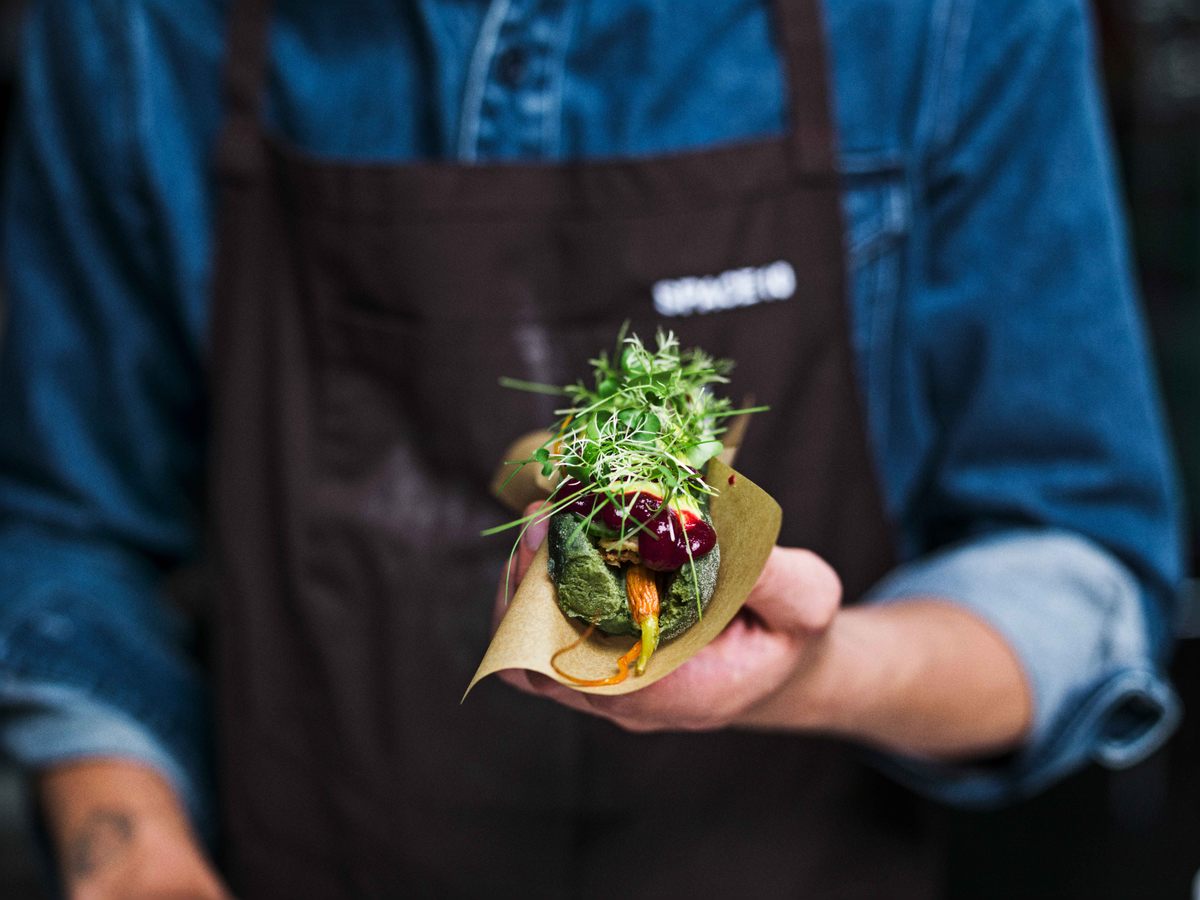
Is this a culinary moonshot, or a prescient look at the future of food? Space10’s redesigns have precedents in the form of, say, Soylent—the meal-replacement drink. But the Space10 concept of fast food seems more accessible and certainly more marketable than a sludgy, beige liquid. Trust IKEA to make eating worms feel woke. As for Space10’s algae domes and urban-farming infrastructure, there remain technical concerns (a fear of waterborne infections wiping out an entire harvest) and the question of whether they can scale to feed entire cities.

In the meantime, though, Space10 test kitchen inventions are being documented in a cookbook, Future Food Today, which will be released in Europe in May, and internationally in June.
Gastro Obscura covers the world’s most wondrous food and drink.
Sign up for our email, delivered twice a week.























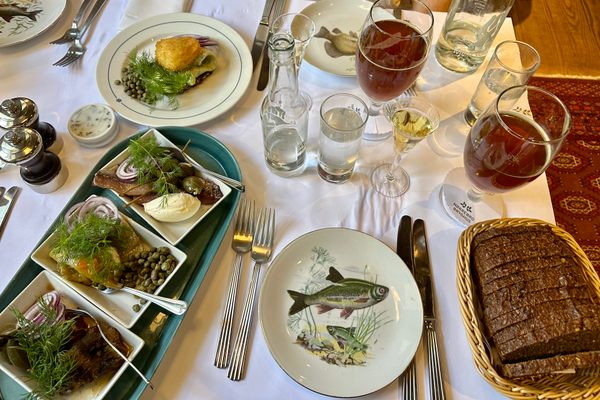
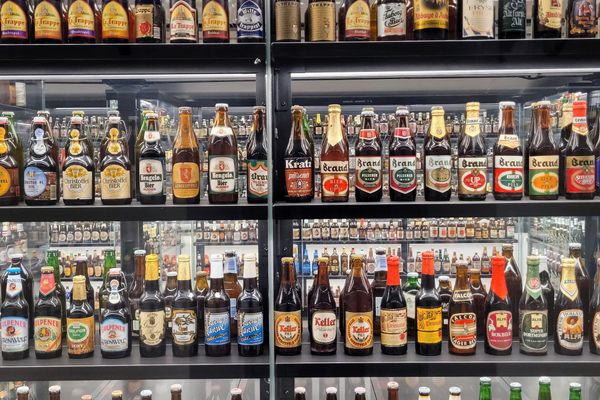



Follow us on Twitter to get the latest on the world's hidden wonders.
Like us on Facebook to get the latest on the world's hidden wonders.
Follow us on Twitter Like us on Facebook